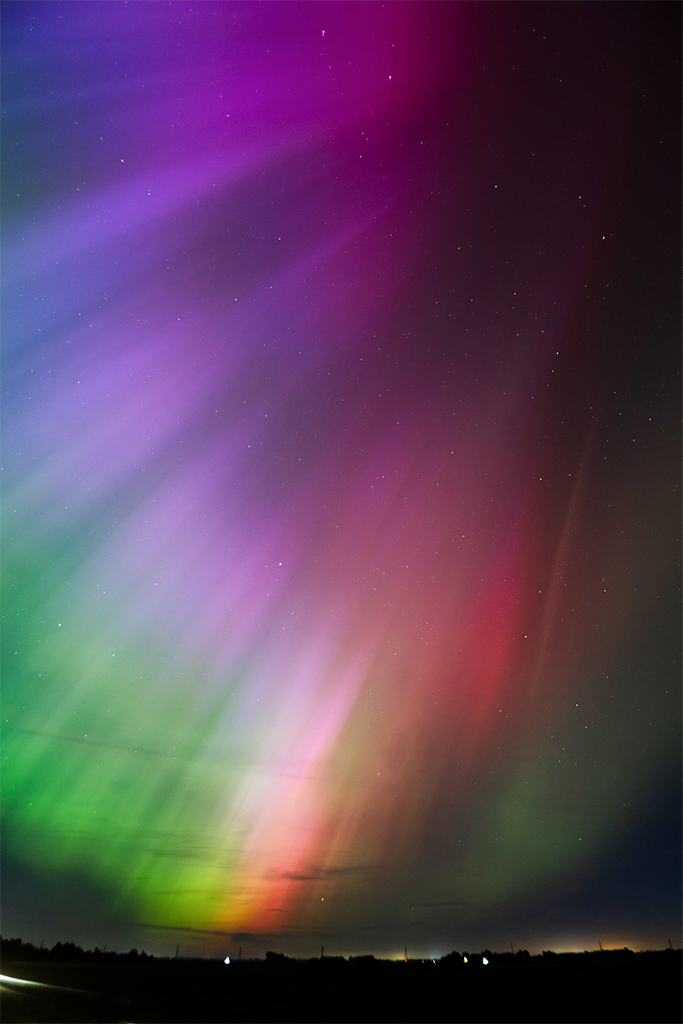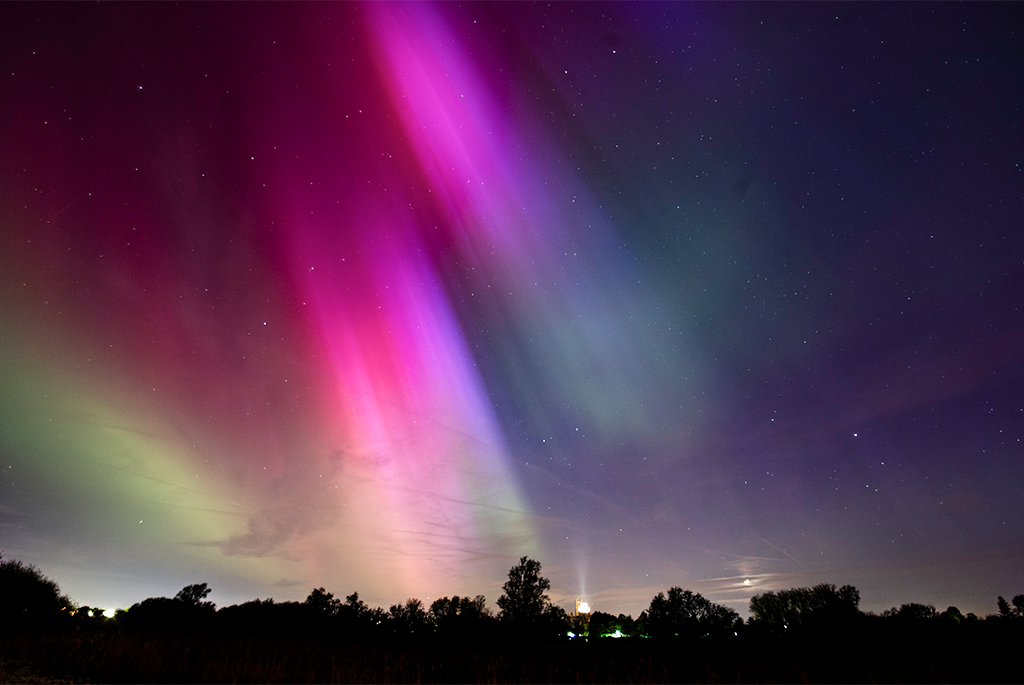Aurora photography in the UK
After an unsuccessful (yet still wonderful) trip to Iceland in an attempt to see the Northern lights, imagine my surprise when they appear right on my doorstep here in East Anglia. Shocked, delighted and a little miffed are the words I would use to describe the experience.
How to spot the Northern lights in the UK
Whilst very possible to see in the highlands of Scotland, this phenomenon visible as far south as Cambridge is rare. An alignment of perfect conditions make your chances slim, but not impossible. A combination of clear skies, low light pollution, time of year and high solar activity are needed. I use the AuroraWatch app to send me alerts when they might be lighting up the nights sky. They are more visible around the spring and summer equinox due to solar weather cycles so keeping your eyes peeled around this time is advisable.

Finding a dark sky
An important thing to have in your mind when planning a shoot, are areas you can get to in time with low light pollution. Conditions can change quickly and sometimes the place you want to capture a bucket list shot will not cooperate, having a shortlist in your mind in advance can help you make decisions on the fly if you get an app alert. Being close to cities will usually make conditions too bright to see anything spectacular, but a field on the outskirts of a town will be dark enough to see something. Going out into really rural areas provides better conditions if possible. GoStarGazing has an interactive map to help you find areas with darker skies.
Cloud cover
If you get an alert, the next thing to check is cloud cover. This is often the make or break on visibility, even in the Arctic Circle. I usually refer to the cloud map provided by The Met Office to check conditions in real time and see where is likely to be cloudy later in the night.
Equipment
It goes without saying, have a DSLR or mirrorless camera will help immensely when photographing the aurora but it is possible for newer and high quality smart phones will have night modes sensitive enough to capture the lights.
For a DSLR or mirrorless camera, you will need a tripod and a wide angle lens. This will keep the weighty camera steady and let you view a good portion of the sky in your image. I often use a 24mm lens to shoot skyscapes. but a 16mm lens will be even better. If you have a tripod with a phone attachment, this can really help steady smart phone images but equally propping your phone up on a wall or against a bag can make a huge difference.
Settings
This can be make or break for your shots. First thing before you lerave the house, turn your LCD brightness right down to minimum. This will help preserve your night vision so you can see the aurora when you look to the sky. Next you want to set your lens on manual focus and pull the focus ring to infinity. I have found a quirk with some lenses that you actually get sharper photos when you pull your focus back a millimetre or 2 back from infinity. Using liveview and focusing in on a star will ensure your images are pin sharp. You will also want to shoot with your camera on the manual setting so you can control each parameter. I put my ISO up as high as I can before getting too much noise in the image, for my 6D this is about ISO1600 but with some cameras you may be able to push this to 3200. For my shutter speed, I never go slower than 10 seconds to ensure I don’t get light trials on my stars as the earth rotates. The last thing is aperature, for this you want to open your lens as wide as it will go so drop this setting as low as it will go. F2.8 is perfect but it is perfectly possible to get amazing photos with F4.
Additional things
One thing often not mentioned is the importance of keeping your night vision so you can actually see what your photographing. Avoid looking at your phone if possible as these screens are intensely bright even on their lowest settings. To get you to your location without tripping up I would definately recommend purchasing a red light as this helps your eyes much more than a white light. A bicycle torch with a red light setting will do the trick nicely at a budget price.
Aurora season in the northern hemisphere is between September and April so wrapping up warm is also advised. Astrophotography also involves standing in isolated places with expensive equipment for long periods of time, so stay safe and happy shooting!
